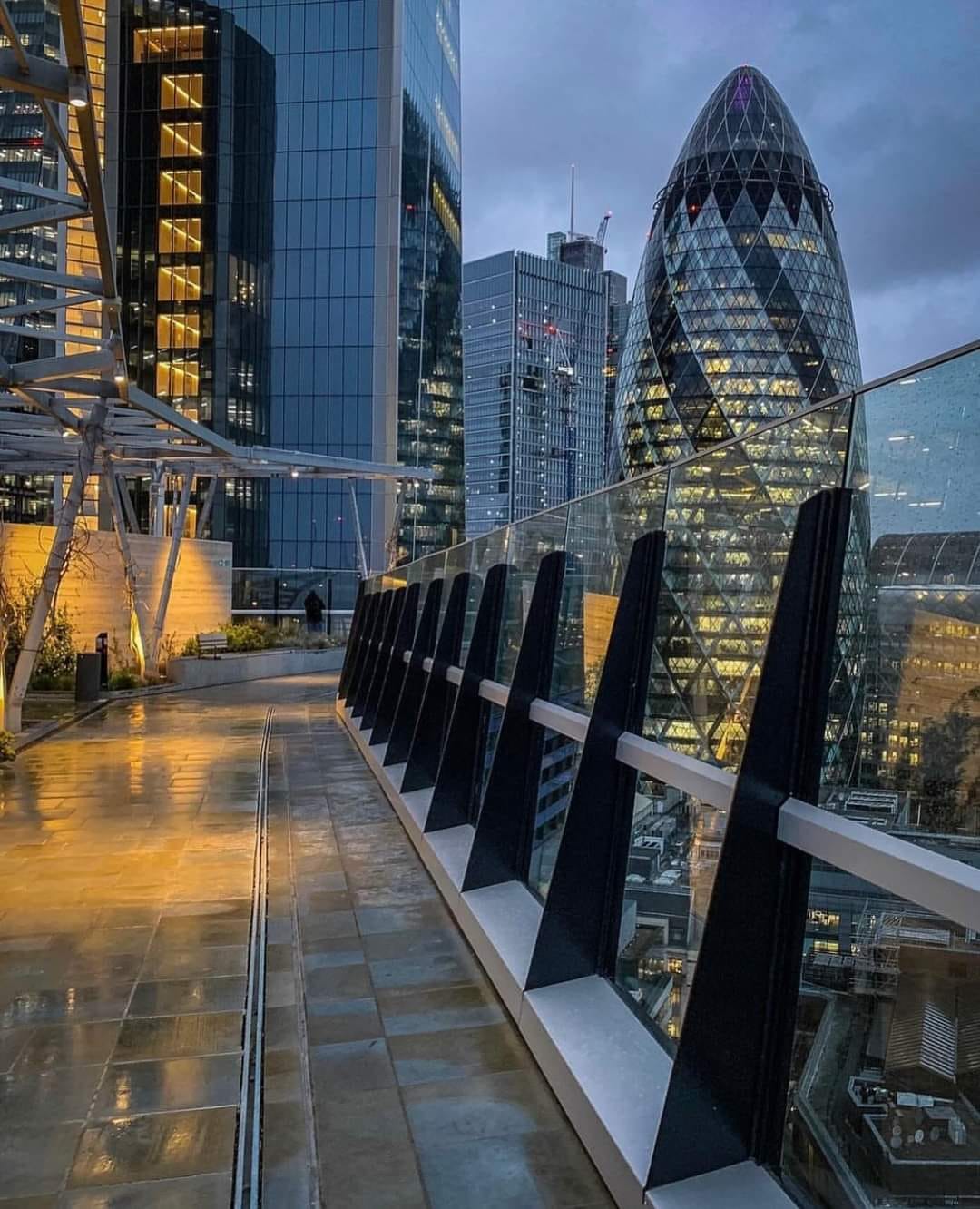Events
| Name | organizer | Where |
|---|---|---|
| MBCC “Doing Business with Mongolia seminar and Christmas Receptiom” Dec 10. 2024 London UK | MBCCI | London UK Goodman LLC |
NEWS
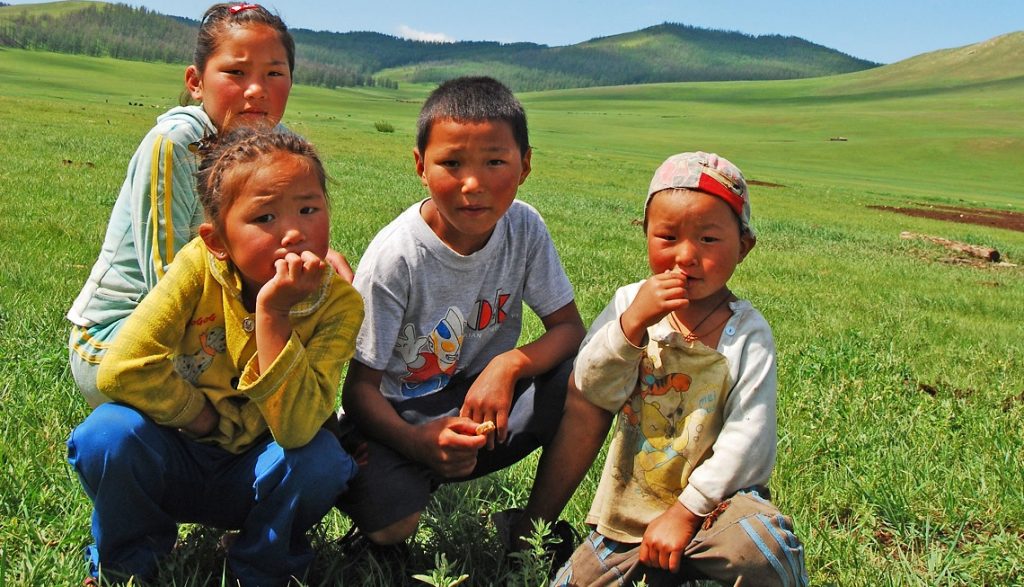
Can Mongolia’s oldest traditions survive a changing climate? www.conservation.org
Conservation International is helping herders restore the Mongolian steppe.
They were nomadic herders long before the rise of Genghis Khan.
For thousands of years, Mongolian nomads have herded across the country’s vast steppe grassland. It’s a legacy they keep close today: Roughly 40 percent of Mongolians still herd livestock, following traditions their ancestors have honored for millennia.
For these communities, adaptability is survival. Nothing is static — not the harsh weather, not the steppe and certainly not the people.
But the pace of change today is no longer seasonal.
Mongolia is warming more than three times faster than the global average. Between 1940 and 2015, average temperatures rose by 2.24 degrees Celsius (4.03 Fahrenheit). For comparison, much of the rest of the world is struggling to hold warming below the dangerous threshold of 1.5 degrees C (2.7 F). Here in central Asia, that threshold was passed long ago.
The effects are unmistakable: longer droughts, vanishing water sources and a surge in brutal cold snaps known as dzuds — sudden freezes that killed more than 7 million livestock in 2024.
But a new effort supported by Conservation International in Mongolia’s Gobi Desert — one of the harshest landscapes on Earth — is helping herders restore fragile grazing lands that have been fractured by overgrazing and climate change.
One of the projects is centered in the Lakes Valley, a vulnerable ecosystem in the shadow of Ikh Bogd, a 4,000-meter (13,000-foot) mountain that towers above the steppe. Here, in the Erdenet Mal Sureg community, herders still rely on traditional strategies like seasonal movement and rotational grazing to survive the extremes.
With support from the start-up Good Growth and funding from Conservation International’s Regenerative Fund for Nature, the community is pairing that deep knowledge with new tools to build resilience on a changing steppe.
It starts with trust.
“People don’t change how they graze because someone shows up with a satellite map of all the degradation,” said Jim Fitzpatrick, Conservation International’s lead on the project. “You have to sit down, drink tea, hear their stories. You have to understand the land the way they do."
Before introducing any new tools or approaches, Good Growth has spent time walking the land with herders — mapping valleys, marking where grass no longer grows, listening. Together, they are agreeing on what needs to change and where to start.
“We must ensure any long-term plan belongs to the community,” said Chultem Batbold, a scientist with Good Growth, who grew up on the steppe. “It has to come from what the community already practices — and build on it."
Mongolian herders move with the seasons, guiding their flock from summer pastures to sheltered winter grounds. These migrations aren’t random — they’re rooted in a deep, inherited understanding of the land’s natural rhythms.
Through satellite monitoring, herders are beginning to receive early warnings about conditions on the ground — a pasture drying out, or the telltale signs of a dzud beginning to form. These real-time updates, shared through social media and mobile apps, could give herders a critical window to respond.
And more is on the horizon. Good Growth is working to develop a system that estimates how long a pasture can support grazing before it needs rest — using satellite images, machine learning and on-the-ground checks. The aim isn’t just to react. It’s to prevent pastures from reaching that breaking point in the first place — rotating grazing areas more intentionally, while ensuring that herd sizes don’t balloon out of control.
“For many families, this is all about cashmere — sometimes that’s 90 percent of their income,” Fitzpatrick said. “And when the price drops, they can feel like their only option is to raise more animals just to make up the difference."
But that survival strategy is costly for nature. Cashmere goats are especially hard on the land — stripping vegetation down to the root.
“One option we’re exploring with herders is selling livestock for meat, which has a more stable price and could reduce the number of animals they need to keep,” Fitzpatrick said. “We’re also working to create markets for other fibers — like camel or yak — so families have more ways to earn a living without adding pressure on the land.”
Good Growth is working with global fashion brands to do just that — building a supply chain rooted in regeneration. Herders earn better prices for higher-quality fiber, while the land gets a chance to recover.
At the heart of all these efforts is balance — where economic resilience and ecological health, as well as the future and the past, are bound together.
“Our way of life depends on nature, so we’ve always known we have to protect it,” said Batbold. “That’s part tradition, part belief — but at its core, it’s simple: nature is alive, and if we harm it, it will answer back."
BY:
Will McCarry is the content director at Conservation International.

ILO’s SCORE Programme Launches in Mongolia’s cashmere sector www.ilo.org
In June 2025, the International Labour Organisation (ILO) Country Office for China and Mongolia launched the Sustaining Competitive and Responsible Enterprises (SCORE) Programme in Mongolia. The programme is implemented under the Youth Employment Promotion (YEP) project, funded by the Government of the Republic of Korea through the ILO/Korea Partnership Programme.
The SCORE is a global ILO initiative designed to improve productivity and working conditions in small and medium enterprises (SMEs). Over the past 15 years, the SCORE programme has been implemented in over 6,000 enterprises across more than 30 countries.
In Mongolia, the SCORE Programme aims to contribute to the YEP project’s objective of promoting decent work for young people by enhancing workplace cooperation and competitiveness through capacity-building training.
A total of eight national trainers—comprising experts from industry, academia and non-governmental organizations—have been trained by an international SCORE Master trainer. These national trainers will work alongside the international expert for the next five months to coach and provide technical and practical support to five selected enterprises in the cashmere sector: Goyol cashmere, Khanbogd cashmere, Evseg cashmere, Capra Doro cashmere, and Blue Sky cashmere with focus on improving workplace cooperation, human resource management and quality management.
Mongolia’s cashmere industry is a national treasure. Through programmes like SCORE, we can ensure it becomes a global example of how competitive, responsible enterprises can provide decent work and opportunities for the next generation.” said Mr. Chang-Hee Lee, Director of the ILO Country Office for China and Mongolia.
The SCORE programme is being implemented in collaboration with the Ministry of Family, Labour and Social Protection, Ministry of Food, Agriculture and Light Industry, Mongolian Wool and Cashmere Association and Mongolian Industrial Trade Union Federation.
...
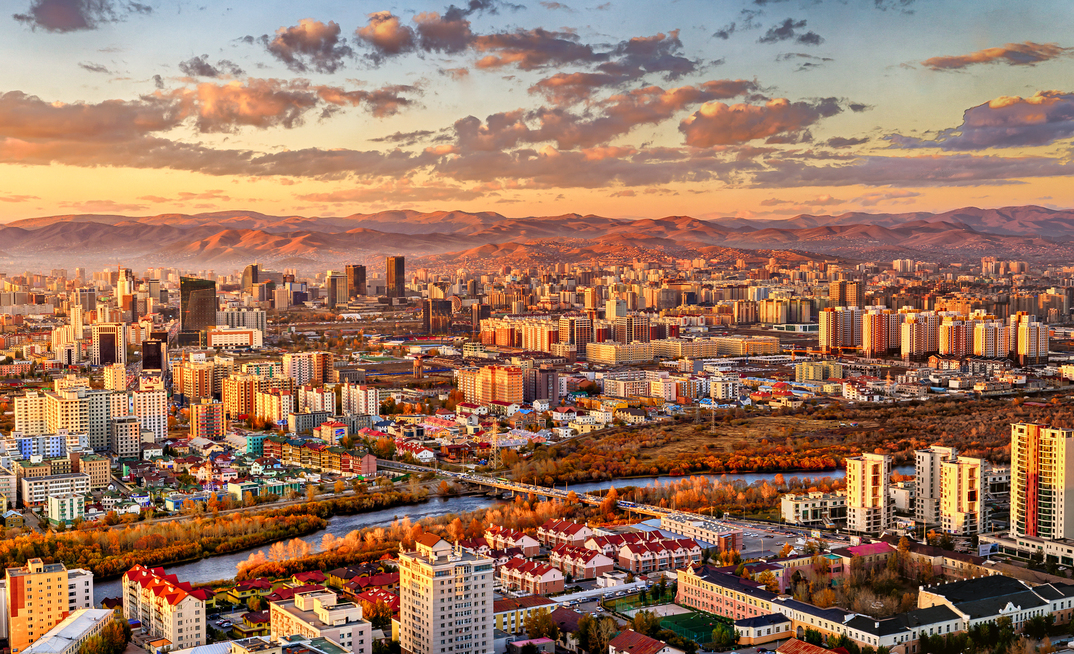
Public urged to take caution amidst intense heat www.ubpost.mn
With a prolonged heatwave gripping much of the country, health officials are urging the public to take proactive measures to prevent heat-related illnesses, particularly heatstroke, which can have life-threatening consequences. As temperatures soar well above seasonal norms, individuals of all ages—especially children, the elderly, and those with chronic health conditions—are being reminded to prioritize their well-being and remain alert to the risks of excessive heat.
Authorities strongly advise the public to limit outdoor activities during peak sunlight hours, typically between late morning and mid-afternoon, when UV exposure is at its highest. If going outdoors is necessary, people should seek shaded areas whenever possible and wear appropriate sun-protective gear, including wide-brimmed hats, UV-blocking sunglasses, long-sleeved light clothing, and sunshades or umbrellas.
Medical experts emphasize that heatstroke does not solely occur from direct sunlight on the head; prolonged exposure of uncovered arms, legs, and the neck can also result in overheating and sunstroke. Therefore, wearing loose-fitting, breathable clothing that shields the skin, and taking regular measures to cool the body—such as dampening the head or neck with water—is essential when spending extended periods outdoors.
Infants and young children require special attention, as their bodies are less efficient at regulating temperature. Caregivers are urged to keep them in cool, shaded environments, ensuring that air circulation and humidity levels are appropriate to prevent overheating. It is also crucial to monitor hydration closely—not just for children, but for everyone. People are encouraged to drink water frequently throughout the day, regardless of whether they feel thirsty, to avoid dehydration, which can set in quickly during extreme heat
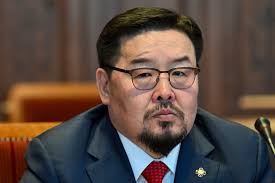
Prime Minister Tasks Ambassadors with Attracting Foreign Investment www.montsame.mn
On June 24, Prime Minister of Mongolia Zandanshatar Gombojav held a virtual meeting with the heads of Mongolia’s diplomatic missions abroad.
A total of 34 ambassadors, consuls general, consuls, and senior officials from the Ministry of Foreign Affairs participated in the meeting. Prime Minister Zandanshatar provided a detailed briefing on the policies and actions being implemented by the Government and instructed the heads of diplomatic missions to take proactive actions in mitigating the negative impacts of global geopolitical tensions on Mongolia’s economy and in addressing major development challenges the country is facing.
The Prime Minister emphasized the importance of pursuing the peace-loving, open, independent, and multi-pillar foreign policy principles consistently and directed the diplomats to maintain balanced relations with Mongolia’s two neighbors and third neighbors alike. Special attention was urged to ensure coherence and unity in foreign policy and actions.
The Premier noted that the Government is working to ensure continuity and efficiency in Government policy, as the Government should operate uninterruptedly and promptly. He underlined that the Government is striving not merely for cost-cutting, but for a strategic restructuring that enhances policy implementation and accountability, eliminates institutional overlap, and streamlines Government structures.
Prime Minister Zandanshatar reiterated that the Government attaches great importance to foreign relations for securing a favorable international environment in safeguarding Mongolia’s sovereignty and national interests. This virtual meeting with heads of diplomatic missions demonstrates that commitment.
The Prime Minister also called for a comprehensive approach to strengthening exports, addressing the trade deficit, and overcoming the pressing socio-economic difficulties by creating a conducive foreign environment. The Premier mandated that diplomatic missions focus with urgency and initiative on attracting foreign investment to support the national economy and achieve tangible results. The Prime Minister pledged attention to implementing viable proposals and initiatives put forth by the diplomats.
In addition, PM Zandanshatar underscored the need for a unified foreign policy and ordered that the "one-window principle" be observed in conducting foreign policy and activities as well as provisions of Mongolia’s legislation, policy documents, and official guidance must be strictly followed. The Prime Minister further instructed Cabinet members to consult with the Ministry of Foreign Affairs before organizing any external engagements or meetings.
During the meeting, the heads of diplomatic missions, particularly the Ambassadors to the Russian Federation and the People’s Republic of China, provided updates to the Prime Minister on the current state of Mongolia’s bilateral relations with those countries, outlined existing challenges, and received directives and guidance on future actions to be taken.
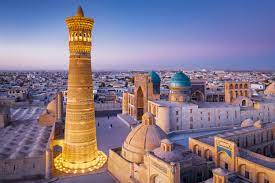
Mongolia, Uzbekistan sign cooperation documents www.xinhuanet.com
Mongolia and Uzbekistan have signed several cooperation documents, the Mongolian presidential office said on its website on Tuesday.
The documents, including a joint declaration on comprehensive partnership between Mongolia and the Republic of Uzbekistan and a memorandum of understanding on cooperation in the mineral resources sector, were signed in the Mongolian capital, Ulan Bator.
Accompanied by a high-ranking delegation, Uzbek President Shavkat Mirziyoyev arrived in Ulan Bator on Tuesday afternoon for a two-day state visit at the invitation of Mongolian President Ukhnaa Khurelsukh.
This marks the first visit by an Uzbek president to Mongolia since the establishment of diplomatic relations between the two countries.

Mongolia-British Parliamentary Group Welcomes Members of Parliament of the United Kingdom www.montsame.mn
Chair of the Mongolia-British Parliamentary Group Undram Chinbat, together with Group Members, welcomed Chair of the British Group Inter-Parliamentary Union (BGIPU) of the British Parliament Fabian Hamilton and other officials from the United Kingdom of Great Britain and Northern Ireland.
At the beginning of the meeting, Member of the State Great Khural (Parliament) of Mongolia and Chair of the Mongolia-British Parliamentary Group, Undram Chinbat, expressed her pleasure of meeting the British delegates once again in Ulaanbaatar and warmly welcomed them to Mongolia. MP Undram mentioned that she had worked as part of the team that accompanied the Chairman of the State Great Khural of Mongolia on his Official Visit to the United Kingdom at the invitation of the Speaker of the House of Commons, Lindsay Hoyle. She highlighted the Visit as significant in broadening the cooperation between the two countries’ legislative bodies. Additionally, Member of Parliament Undram Chinbat noted that the Visit by the representatives led by the Chair of the BGIPU of the British Parliament, Fabian Hamilton, is just as impactful for the bilateral parliamentary cooperation.
Mr. Fabian Hamilton extended his gratitude to the Chair and Members of the Mongolia-British Parliamentary Group for allocating time to meet them. At the meeting, the two sides exchanged views on expanding cooperation in the fields of education, culture, tourism, and economy. Emphasizing tourism as one of the key economic sectors, the Mongolia-British Parliamentary Group members mentioned that the Government of Mongolia designated 2023-2028 as “Years to Visit Mongolia”. In this context, it was noted that citizens of 34 foreign countries are now exempt from visa requirements for visits of up to 30 days to Mongolia, and that citizens of the United Kingdom holding any type of passport are now eligible to travel visa-free. In 2024, the two sides revised the “Air Services Agreement Between the Government of Mongolia and the Government of the United Kingdom of Great Britain and Northern Ireland”, which is of great importance for increasing mutual tourism and economic circulation, underscored the Mongolia-British Parliamentary Group members.
The meeting was attended by Member of Parliament and Chair of the Mongolia-British Parliamentary Group Undram Chinbat, Members of the Mongolia-British Parliamentary Group Bum-Ochir Dulam, Mandkhai Mendbayar, and Sarnai Myagmardash, Chair of the BGIPU of the British Parliament Fabian Hamilton, Members of the House of Commons and BGIPU Tanmanjeet Dhesi, Phil Brickell, and James Wild, Members of the House of Lords and the BGIPU Baroness Northover and Lord Cromwell, and other officials, reported the Media and Public Relations Department of the State Great Khural.
...
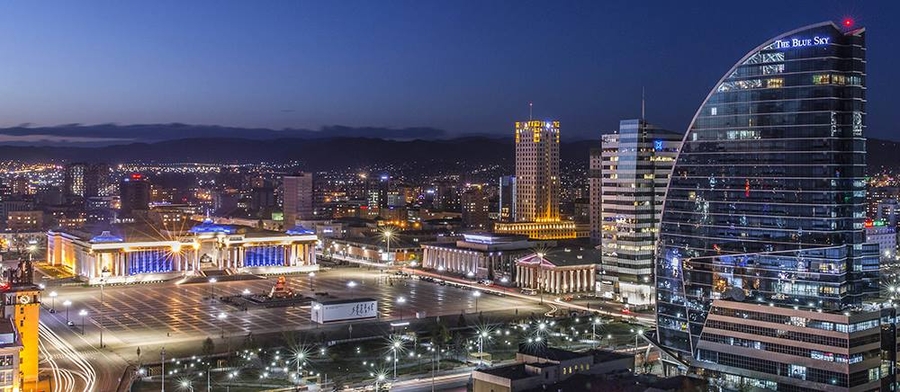
Ulaanbaatar Launches Integrated Tele-Monitoring Center www.montsame.mn
On June 23, the Integrated Tele-Monitoring Center opened in Ulaanbaatar to monitor 176 intersections, exits, and roads, using an AI-based system to detect 10 types of traffic violations.
This unified camera system which allows for timely detection and intervention of crimes and violations, is expected to greatly help prevent traffic congestion and road accidents in Ulaanbaatar and create a safe and peaceful living environment for citizens.
Member of the State Great Khural Sainzorig Purevjav noted, “This CCTV system marks the beginning of making the capital more productive and smart, ensuring citizens’ right to live in a safe and healthy environment. The system aims to ensure road safety, prevent congestion, and allow for timely intervention in crimes and violations. It is not only for regulating road safety but also the foundation for building a smart and productive Ulaanbaatar in the future.”
Director of the Traffic Control Center Ch. Khuvizaya, said, “As of today, the Traffic Control Center is operating 2,606 cameras to detect 10 types of violations and has started sending notifications to the drivers via SMS. This system allows us to collect real-time data on all vehicles involved in traffic. Based on this, we can smartly coordinate traffic lights and road flow.”
Previously, the districts and subdistricts in the capital city did not have a unified system, and camera usage was insufficient. With the establishment of the Integrated Tele-Monitoring Center in the capital and sub-monitoring centers under the nine District Governors’ Offices, camera footage is now consolidated under centralized management, enabling the exchange of information between the main control center and the sub-centers.

Sodnompiljee Enkhbayar Wins Seventh Gold Medal at the World Cup www.montsame.mn
At the World Para Powerlifting World Cup 2025 held on June 17-25, 2025, in Beijing, China, athletes from Mongolia won four medals.
Under the guidance of National Team Head Coach D. Battulga and Coach B. Enkhbayar, five athletes from Mongolia competed in the World Cup. In the men's 107 kg category, Paralympic gold, silver, and bronze medalist, Hero of Labour of Mongolia, and Honored Athlete Sodnompiljee Enkhbayar won a gold medal, pressing 232 kg. This marks his seventh gold medal at the World Cup.
In the junior men's 54 kg category, national team athlete D. Jigmed earned a gold, pressing 151 kg medal. He set a new Asian junior record with his first lift and went on to break the junior world record with his final attempt. Moreover, in the senior men's 54 kg category, athlete Jigmed lifted a total of 443 kg and claimed a silver medal.
Meanwhile, in the senior men's 59 kg category, national team athlete B. Altangerel pressed a total of 333 kg to win a bronze medal.
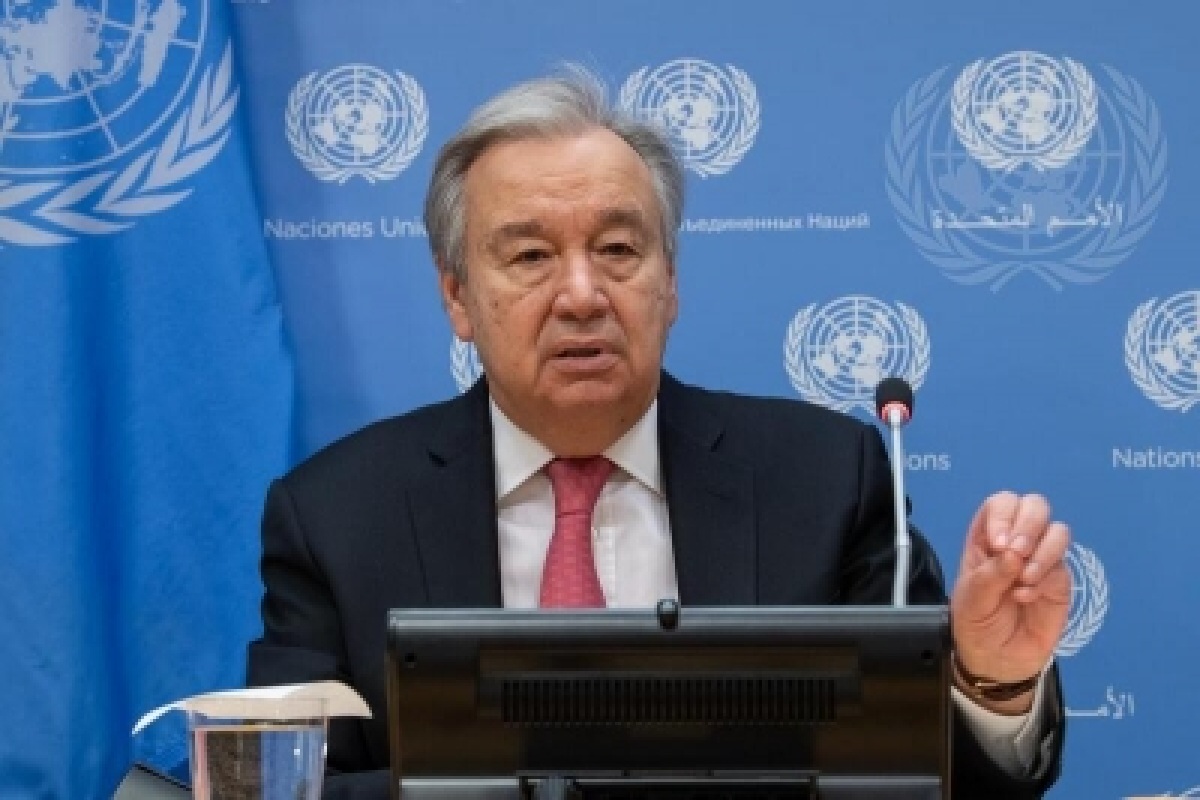
United Nations Secretary-General has appointed Sarangoo Radnaaragchaa of Mongolia as the United Nations Resident Coordinator in Kazakhstan www.unsdg.un.org
United Nations Secretary-General António Guterres has appointed Sarangoo Radnaaragchaa of Mongolia as the United Nations Resident Coordinator in Kazakhstan, with the host Government’s approval, effective 22 June 2025.
Ms. Radnaaragchaa brings 25 years of rich experience in sustainable development across Europe and Central Asia, marked by progressive leadership roles.
Prior to her appointment as Resident Coordinator, she served as Regional Advisor on Environment at the UN Economic Commission for Europe (UNECE), where she successfully repositioned the function of UNECE representative in several UN Country Teams. In this capacity, she also provided targeted advisory services and technical expertise to 17 UN programme countries in Europe and Central Asia, facilitating their implementation of UNECE conventions, norms and standards.
Before joining UNECE in 2014, Ms. Radnaaragchaa built an extensive career in sustainable development and natural resources management at national, regional and international levels. She served as a senior officer with the Ministry of Nature and Environment of Mongolia and subsequently fulfilled various assignments with UNDP, the Food and Agriculture Organization, the United Nations Environmental Programme, the International Union for Conservation of Nature, the German Society for International Cooperation (GIZ) and consulting companies. Her areas of expertise encompass policy analysis and formulation, transboundary cooperation, partnership building, participatory natural resource management, capacity development and programme management.
Ms. Radnaaragchaa holds a master’s degree in environmental management from Flinders University, Australia. She is married and has two children.
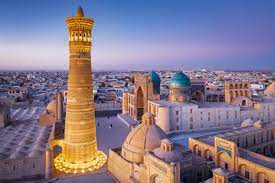
Uzbekistan - Mongolia: A New Stage of Multifaceted Cooperation www.montsame.mn
Ahead of the State Visit of President of the Republic of Uzbekistan Shavkat Mirziyoyev to Mongolia, the National News Agency of Uzbekistan (UzA) published a review of the current state of Uzbek-Mongolian relations. Below is the full text of the publication by the UzA observer.
From June 24 to 25, 2025, at the invitation of the President of Mongolia Ukhnaagiin Khürelsükh, the President of the Republic of Uzbekistan Shavkat Mirziyoyev will pay the first-ever State Visit to Mongolia.
This event can rightfully be considered historic – in over thirty years of diplomatic relations between the two countries, this will be the first state visit of the Leader of Uzbekistan to Ulaanbaatar.
The upcoming visit is a logical continuation of the dynamic political dialogue initiated in June 2024, when the President of Mongolia Ukhnaagiin Khürelsükh visited Uzbekistan. At that time, several key agreements were reached in an atmosphere of trust and mutual understanding, giving strong momentum to the development of multifaceted cooperation.
Uzbekistan and Mongolia, despite geographical distance and the absence of a shared border, are rapidly deepening ties across diplomacy, economics, transport, culture, and humanitarian cooperation. The opening of the Embassy of Mongolia in Tashkent, the intensification of intergovernmental and parliamentary dialogue, the growing interest of business communities, and the signing of 14 bilateral agreements are clear indicators of strengthened trust and a shared commitment to deepening the partnership.
President Shavkat Mirziyoyev’s visit to Ulaanbaatar marks the beginning of a new chapter in relations between Uzbekistan and Mongolia – a stage guided by principles of pragmatism, mutual benefit, sustainable development, and solidarity in the face of modern challenges.
Diplomatic Foundations and Political Dialogue
Diplomatic relations between Uzbekistan and Mongolia were established on January 25, 1992. Since then, bilateral ties, initially developing at a measured pace, have gained noticeable momentum in recent years, thanks to the strategic policies of openness and good-neighborliness pursued by the leadership of both countries.
The political dialogue at the highest level received a qualitatively new impetus in 2024, when, for the first time since independence, the President of Mongolia paid a state visit to Uzbekistan. This visit marked a turning point in rethinking the potential of bilateral relations. As President Shavkat Mirziyoyev noted, “Mongolia is our traditional and reliable partner in the Asian region, and our relations are built on the principles of friendship, mutual respect, and support”.
The meetings resulted in the signing of an extensive package of 14 intergovernmental and interagency agreements covering key areas of cooperation, from trade and transport to science, agriculture, security, and mass media. Among them were the Agreement on International Road Transport, a Cooperation Program in Tourism, memoranda of understanding between the national academies of sciences and news agencies, and a Protocol on establishing a Joint Business Council.
To ensure the systematic advancement of these agreements, an Intergovernmental Commission at the level of deputy prime ministers was established. Its mandate includes overseeing the implementation of signed documents and coordinating new initiatives.
The opening of the Embassy of Mongolia in Tashkent in 2024 holds particular significance. Heads of state attended the ceremony, underscoring the political will to strengthen institutional ties.
Parliamentary diplomacy is also gaining importance. Meetings between senators of Uzbekistan and members of Mongolia’s Inter-Parliamentary Friendship Group have contributed to developing a roadmap for interregional cooperation and parliamentary oversight of intergovernmental agreements. The sides are working to transform parliamentary institutions into active participants in bilateral rapprochement. Additionally, coordination between the two countries is expanding on international and regional platforms such as the United Nations and the Shanghai Cooperation Organization, where Tashkent and Ulaanbaatar advocate for multilateral dialogue, sustainable development, and adherence to the principles of international law.
Statistics and Trade-Economic Indicators
The significant growth in trade turnover between Uzbekistan and Mongolia during 2022-2024 reflects the real momentum of the bilateral trade partnership:
According to statistical reports from the State Committee of the Republic of Uzbekistan on Statistics, in 2022, Uzbekistan’s exports amounted to $7.100 million, while imports from Mongolia reached $2.800 million. During this period, the trade volume between the two countries stood at $9.900 million.
In 2023, Uzbekistan’s exports rose to $10.200 million, and imports from Mongolia reached $3.600 million. The total trade turnover increased to $14.000 million.
In the first five months of 2024 alone, Uzbekistan’s exports reached $7.900 million, while imports from Mongolia totaled $3.100 million. The total trade turnover for this period amounted to $11.000 million.
Growth and Structure
In 2023, trade turnover between Uzbekistan and Mongolia reached $14 million, nearly doubling compared to 2022. Exports amounted to $10.2 million, while imports totaled $3.6 million.
In the first five months of 2024, trade turnover had already reached $11 million (with exports at $7.9 million and imports at $3.1 million), indicating a continued upward trend.
Official UN sources (COMTRADE) confirm this dynamic: Uzbekistan’s exports to Mongolia reached $26.5 million in 2024, more than double the 2023 figure of approximately $10 million.
Export and Import Structure
Uzbekistan’s exports to Mongolia primarily consist of:
Food products (including vegetables, fruits, and other foodstuffs);
Goods from the light industry and automotive sector (including Chevrolet vehicles);
Textiles and agricultural products.
Mongolia’s imports to Uzbekistan include:
Livestock, meat, hides, and wool;
Mineral and agricultural products.
According to 2023 data, Mongolia exported sheep and lamb meat to Uzbekistan worth approximately $4.6 million. In turn, Uzbekistan exported goods valued at $5.4 million to Mongolia, including grapes, fruits, food products, refrigeration and freezing equipment, and cargo vehicles.
Economic Cooperation and Business
Uzbekistan and Mongolia are steadily expanding the scope of their economic cooperation, demonstrating growing interest in jointly implementing mutually beneficial projects in strategic sectors. Over the past two years, special emphasis has been placed on the agricultural sector, light industry, pharmaceuticals, transport, and information and communication technologies.
One notable development was the beginning of small livestock exports from Mongolia to Uzbekistan. In January 2024, the first shipments were made, delivering over 1,400 sheep. In total, up to 100,000 head are planned for import. The animals are being sent to specialized farms in Navoi region, where breeding will be carried out in accordance with modern veterinary and genetic standards. At the same time, the two sides are working on establishing integrated livestock and meat processing clusters, including facilities for the production of halal-certified products and the advanced processing of wool and hides, in line with the requirements of export markets in the Middle East and Southeast Asia.
Particular attention is warranted by the opening in 2024 of an official Chevrolet dealership in Ulaanbaatar, where vehicles manufactured in Uzbekistan are now being showcased. The first model – the Chevrolet Cobalt – has already been delivered to a customer. This milestone marks both the expansion of Uzbek automotive exports and the growing interest of the Mongolian market in competitive and affordable vehicles.
Against the backdrop of this growing industrial partnership, joint projects in the pharmaceutical sector are also gaining momentum. The two sides are exploring opportunities to supply Uzbek-made pharmaceuticals to Mongolia and establish joint production facilities. Plans are also being discussed for creating a diagnostic center in Tashkent with Mongolian participation.
Prospects in construction materials, information technology, and the textile industry are equally promising. Several Mongolian companies have expressed readiness to invest in joint projects for basalt extraction and processing, digital solutions, and producing finished textile goods based on Uzbek raw materials.
A significant impetus for business cooperation was provided by the Uzbekistan – Mongolia Business Forum held in Samarkand in 2024, followed by a similar event in Tashkent in June 2025, which brought together more than 150 companies. During B2B and G2B meetings, agreements were reached on joint construction, mechanical engineering, the food industry, and logistics projects. In the coming months, industrial exhibitions are planned in the capitals of both countries, along with the reciprocal opening of trade houses.
These initiatives are supported by the established Joint Business Council and the provisions of the agreements on mutual investment protection and tax regulation, which are expected to be signed by the end of the year. These measures aim to create a favorable and predictable business environment for investors from both nations.
Transport and Logistics
The transport and logistics sector has been one of the key areas of expanding cooperation between Uzbekistan and Mongolia over the past two years. Given the geographical distance between the two countries, flexible and strategically sound solutions are required, and both sides are now purposefully building an infrastructural link capable of ensuring sustainable communication channels.
In June 2024, during the state visit of the President of Mongolia Ukhnaagiin Khürelsükh to Tashkent, two fundamental documents were signed: the Intergovernmental Agreement on International Road Transport and the Intergovernmental Agreement on Air Communication. These agreements provide a legal framework for launching regular transport services and facilitating transit between the countries.
The parties agreed to launch a direct air route between Tashkent and Ulaanbaatar, becoming the first regular air link between Uzbekistan and Mongolia. According to preliminary plans, the flight will be operated by Hunnu Air in cooperation with Uzbek aviation entities starting in September 2025. This will significantly reduce travel time between the capitals and stimulate business, tourism, and humanitarian exchanges.
Simultaneously, road connectivity, particularly in freight transportation, is actively developing. In 2024, Uzbekistan and Mongolia doubled the permits for international transit, agreed to implement the E-Permit electronic system, and began developing a pilot route through China and Kyrgyzstan. This route is designed to enable multimodal transport operations with minimal transit costs. The project aims to establish an alternative trade and logistics corridor that connects Mongolia with Central Asia, bypassing the heavily congested routes of East Asia.
A significant achievement has been the launch of deliveries of Uzbek-made UzAuto vehicles to Mongolia. The first batch was delivered to Ulaanbaatar in 2024, and the project became viable thanks to an optimized logistics route through China. This reflects Uzbekistan’s broader strategy of expanding its automotive exports into East Asian markets.
Cultural and Humanitarian Cooperation
The development of cultural ties between Uzbekistan and Mongolia has become an integral component of the broader course toward deepening a comprehensive partnership. In 2024-2025, the humanitarian dimension acquired a dynamic and meaningful character, enriching the political and economic dialogue with an atmosphere of trust and mutual respect.
A highlight of this cooperation was the organization of cross-cultural days held in the capitals of both countries. These events featured exhibitions, concerts, film screenings, and joint folk art festivals showcasing the Uzbek and Mongolian peoples’ rich historical and cultural heritage.
One particularly memorable performance was that of the Mongolian State Morin Khuur Orchestra in Tashkent in 2024. This ensemble, representing the spirit of the nomadic culture of Central Asia, became a symbol of spiritual closeness and openness between the two nations.
In addition to cultural programs, youth and sports exchanges are actively developing. Delegations from sports federations conducted mutual visits, friendly matches were organized, and joint training sessions took place. As part of a bilateral agreement, the two sides are discussing the creation of a Youth Initiatives Center and organizing regular youth camps involving schoolchildren and students from both countries.
Expanding cooperation in education has become one of the key priorities. The parties agreed to resume the provision of scholarships for Mongolian students in Uzbekistan universities, including Tashkent State University of Economics, Urgench University, and medical institutions. Uzbekistan has expressed its readiness to increase the number of quotas for Mongolian citizens under the framework of bilateral academic exchange.
Additional momentum was provided by the agreements between the national academies of science, signed during the 2024 visit of the President of Mongolia. A joint archaeological research program is being implemented, and exchanges of scholars and trainees between universities and research centers are planned. Support was also extended to a joint project dedicated to studying the heritage of the Great Silk Road in Central Asia, including the participation of Mongolian experts in Uzbek expeditions to Karakalpakstan and Samarkand region.
Healthcare and Humanitarian Initiatives
A new area of bilateral cooperation has emerged in the healthcare sector. Under agreements reached in 2024, plans were announced to open a branch of the Mongolian Medical Center in Tashkent. This project aims to introduce advanced medical technologies and foster clinical collaboration in diagnostics and preventive medicine.
Joint pharmaceutical initiatives are also developing. The Mongolian side has shown interest in procuring Uzbek pharmaceutical products and establishing joint production facilities in Uzbekistan. Consultations between relevant agencies on mutual recognition of medical certificates and simplifying pharmaceutical registration procedures are ongoing.
Special attention within the humanitarian agenda is devoted to environmental cooperation. Uzbekistan and Mongolia have initiated the coordination of programs to combat desertification and climate change. The two countries are exploring the integration of Uzbekistan’s “Billion Trees” initiative with Mongolia’s “Green Space” program. This includes joint planting of green belts in arid regions, exchanging best practices on reforestation, and implementing water-saving technologies.
Geopolitical and Regional Context
As a landlocked country between Russia and China, Mongolia is intensifying its engagement with the Central Asian states, viewing the region as a promising vector of its foreign policy. This growing closeness opens up new opportunities for enhancing transport connectivity, fostering energy cooperation, sharing experience in sustainable development, and strengthening regional stability.
Despite the absence of a shared border, Uzbekistan and Mongolia demonstrate similar approaches to ensuring peace, promoting socio-economic reforms, and shaping a multi-vector foreign policy. Both countries strive to diversify their partnerships and actively participate in regional platforms amid global transformations. In particular, Mongolia’s interest in the “Central Asia+” format and its readiness for institutional cooperation with organizations such as the Shanghai Cooperation Organization (SCO) and the Organization of Turkic States confirm its course toward closer integration with the region.
Special attention is given to developing multimodal transport routes, including using Uzbekistan’s logistical potential to facilitate Mongolia’s access to South and Central Asia markets. Furthermore, cooperation in environmental sustainability, particularly through the synergy of the “Billion Trees” initiative and the “Green Space” program, strengthens a shared regional approach to climate challenges.
Conclusion
The development of relations between Uzbekistan and Mongolia over the past two years illustrates a shift from isolated contacts to a systemic and multifaceted partnership. A trust-based political dialogue, the launch of joint economic projects, the expansion of humanitarian exchanges, and the strengthening of transport infrastructure lay the groundwork for sustainable and long-term cooperation.
The state visit of the President of Mongolia to Tashkent in 2024 marked a historic milestone, setting a new level for the bilateral agenda. The upcoming visit of the President of the Republic of Uzbekistan to Ulaanbaatar in June 2025 is expected to build upon this positive momentum, with a focus on the implementation of previously reached agreements and the launch of long-term programs.
The emerging model of relations, based on mutual respect, pragmatism, and a commitment to sustainable development, serves the interests of both countries. In the context of strengthening regional cooperation, Uzbekistan and Mongolia are laying the foundations for a comprehensive strategic partnership oriented toward the future. This partnership can potentially play a significant role not only bilaterally, but also in creating new growth points across Central and East Asia.
Abduaziz Khidirov, UzA
- «
- 1
- 2
- 3
- 4
- 5
- 6
- 7
- 8
- 9
- 10
- 11
- 12
- 13
- 14
- 15
- 16
- 17
- 18
- 19
- 20
- 21
- 22
- 23
- 24
- 25
- 26
- 27
- 28
- 29
- 30
- 31
- 32
- 33
- 34
- 35
- 36
- 37
- 38
- 39
- 40
- 41
- 42
- 43
- 44
- 45
- 46
- 47
- 48
- 49
- 50
- 51
- 52
- 53
- 54
- 55
- 56
- 57
- 58
- 59
- 60
- 61
- 62
- 63
- 64
- 65
- 66
- 67
- 68
- 69
- 70
- 71
- 72
- 73
- 74
- 75
- 76
- 77
- 78
- 79
- 80
- 81
- 82
- 83
- 84
- 85
- 86
- 87
- 88
- 89
- 90
- 91
- 92
- 93
- 94
- 95
- 96
- 97
- 98
- 99
- 100
- 101
- 102
- 103
- 104
- 105
- 106
- 107
- 108
- 109
- 110
- 111
- 112
- 113
- 114
- 115
- 116
- 117
- 118
- 119
- 120
- 121
- 122
- 123
- 124
- 125
- 126
- 127
- 128
- 129
- 130
- 131
- 132
- 133
- 134
- 135
- 136
- 137
- 138
- 139
- 140
- 141
- 142
- 143
- 144
- 145
- 146
- 147
- 148
- 149
- 150
- 151
- 152
- 153
- 154
- 155
- 156
- 157
- 158
- 159
- 160
- 161
- 162
- 163
- 164
- 165
- 166
- 167
- 168
- 169
- 170
- 171
- 172
- 173
- 174
- 175
- 176
- 177
- 178
- 179
- 180
- 181
- 182
- 183
- 184
- 185
- 186
- 187
- 188
- 189
- 190
- 191
- 192
- 193
- 194
- 195
- 196
- 197
- 198
- 199
- 200
- 201
- 202
- 203
- 204
- 205
- 206
- 207
- 208
- 209
- 210
- 211
- 212
- 213
- 214
- 215
- 216
- 217
- 218
- 219
- 220
- 221
- 222
- 223
- 224
- 225
- 226
- 227
- 228
- 229
- 230
- 231
- 232
- 233
- 234
- 235
- 236
- 237
- 238
- 239
- 240
- 241
- 242
- 243
- 244
- 245
- 246
- 247
- 248
- 249
- 250
- 251
- 252
- 253
- 254
- 255
- 256
- 257
- 258
- 259
- 260
- 261
- 262
- 263
- 264
- 265
- 266
- 267
- 268
- 269
- 270
- 271
- 272
- 273
- 274
- 275
- 276
- 277
- 278
- 279
- 280
- 281
- 282
- 283
- 284
- 285
- 286
- 287
- 288
- 289
- 290
- 291
- 292
- 293
- 294
- 295
- 296
- 297
- 298
- 299
- 300
- 301
- 302
- 303
- 304
- 305
- 306
- 307
- 308
- 309
- 310
- 311
- 312
- 313
- 314
- 315
- 316
- 317
- 318
- 319
- 320
- 321
- 322
- 323
- 324
- 325
- 326
- 327
- 328
- 329
- 330
- 331
- 332
- 333
- 334
- 335
- 336
- 337
- 338
- 339
- 340
- 341
- 342
- 343
- 344
- 345
- 346
- 347
- 348
- 349
- 350
- 351
- 352
- 353
- 354
- 355
- 356
- 357
- 358
- 359
- 360
- 361
- 362
- 363
- 364
- 365
- 366
- 367
- 368
- 369
- 370
- 371
- 372
- 373
- 374
- 375
- 376
- 377
- 378
- 379
- 380
- 381
- 382
- 383
- 384
- 385
- 386
- 387
- 388
- 389
- 390
- 391
- 392
- 393
- 394
- 395
- 396
- 397
- 398
- 399
- 400
- 401
- 402
- 403
- 404
- 405
- 406
- 407
- 408
- 409
- 410
- 411
- 412
- 413
- 414
- 415
- 416
- 417
- 418
- 419
- 420
- 421
- 422
- 423
- 424
- 425
- 426
- 427
- 428
- 429
- 430
- 431
- 432
- 433
- 434
- 435
- 436
- 437
- 438
- 439
- 440
- 441
- 442
- 443
- 444
- 445
- 446
- 447
- 448
- 449
- 450
- 451
- 452
- 453
- 454
- 455
- 456
- 457
- 458
- 459
- 460
- 461
- 462
- 463
- 464
- 465
- 466
- 467
- 468
- 469
- 470
- 471
- 472
- 473
- 474
- 475
- 476
- 477
- 478
- 479
- 480
- 481
- 482
- 483
- 484
- 485
- 486
- 487
- 488
- 489
- 490
- 491
- 492
- 493
- 494
- 495
- 496
- 497
- 498
- 499
- 500
- 501
- 502
- 503
- 504
- 505
- 506
- 507
- 508
- 509
- 510
- 511
- 512
- 513
- 514
- 515
- 516
- 517
- 518
- 519
- 520
- 521
- 522
- 523
- 524
- 525
- 526
- 527
- 528
- 529
- 530
- 531
- 532
- 533
- 534
- 535
- 536
- 537
- 538
- 539
- 540
- 541
- 542
- 543
- 544
- 545
- 546
- 547
- 548
- 549
- 550
- 551
- 552
- 553
- 554
- 555
- 556
- 557
- 558
- 559
- 560
- 561
- 562
- 563
- 564
- 565
- 566
- 567
- 568
- 569
- 570
- 571
- 572
- 573
- 574
- 575
- 576
- 577
- 578
- 579
- 580
- 581
- 582
- 583
- 584
- 585
- 586
- 587
- 588
- 589
- 590
- 591
- 592
- 593
- 594
- 595
- 596
- 597
- 598
- 599
- 600
- 601
- 602
- 603
- 604
- 605
- 606
- 607
- 608
- 609
- 610
- 611
- 612
- 613
- 614
- 615
- 616
- 617
- 618
- 619
- 620
- 621
- 622
- 623
- 624
- 625
- 626
- 627
- 628
- 629
- 630
- 631
- 632
- 633
- 634
- 635
- 636
- 637
- 638
- 639
- 640
- 641
- 642
- 643
- 644
- 645
- 646
- 647
- 648
- 649
- 650
- 651
- 652
- 653
- 654
- 655
- 656
- 657
- 658
- 659
- 660
- 661
- 662
- 663
- 664
- 665
- 666
- 667
- 668
- 669
- 670
- 671
- 672
- 673
- 674
- 675
- 676
- 677
- 678
- 679
- 680
- 681
- 682
- 683
- 684
- 685
- 686
- 687
- 688
- 689
- 690
- 691
- 692
- 693
- 694
- 695
- 696
- 697
- 698
- 699
- 700
- 701
- 702
- 703
- 704
- 705
- 706
- 707
- 708
- 709
- 710
- 711
- 712
- 713
- 714
- 715
- 716
- 717
- 718
- 719
- 720
- 721
- 722
- 723
- 724
- 725
- 726
- 727
- 728
- 729
- 730
- 731
- 732
- 733
- 734
- 735
- 736
- 737
- 738
- 739
- 740
- 741
- 742
- 743
- 744
- 745
- 746
- 747
- 748
- 749
- 750
- 751
- 752
- 753
- 754
- 755
- 756
- 757
- 758
- 759
- 760
- 761
- 762
- 763
- 764
- 765
- 766
- 767
- 768
- 769
- 770
- 771
- 772
- 773
- 774
- 775
- 776
- 777
- 778
- 779
- 780
- 781
- 782
- 783
- 784
- 785
- 786
- 787
- 788
- 789
- 790
- 791
- 792
- 793
- 794
- 795
- 796
- 797
- 798
- 799
- 800
- 801
- 802
- 803
- 804
- 805
- 806
- 807
- 808
- 809
- 810
- 811
- 812
- 813
- 814
- 815
- 816
- 817
- 818
- 819
- 820
- 821
- 822
- 823
- 824
- 825
- 826
- 827
- 828
- 829
- 830
- 831
- 832
- 833
- 834
- 835
- 836
- 837
- 838
- 839
- 840
- 841
- 842
- 843
- 844
- 845
- 846
- 847
- 848
- 849
- 850
- 851
- 852
- 853
- 854
- 855
- 856
- 857
- 858
- 859
- 860
- 861
- 862
- 863
- 864
- 865
- 866
- 867
- 868
- 869
- 870
- 871
- 872
- 873
- 874
- 875
- 876
- 877
- 878
- 879
- 880
- 881
- 882
- 883
- 884
- 885
- 886
- 887
- 888
- 889
- 890
- 891
- 892
- 893
- 894
- 895
- 896
- 897
- 898
- 899
- 900
- 901
- 902
- 903
- 904
- 905
- 906
- 907
- 908
- 909
- 910
- 911
- 912
- 913
- 914
- 915
- 916
- 917
- 918
- 919
- 920
- 921
- 922
- 923
- 924
- 925
- 926
- 927
- 928
- 929
- 930
- 931
- 932
- 933
- 934
- 935
- 936
- 937
- 938
- 939
- 940
- 941
- 942
- 943
- 944
- 945
- 946
- 947
- 948
- 949
- 950
- 951
- 952
- 953
- 954
- 955
- 956
- 957
- 958
- 959
- 960
- 961
- 962
- 963
- 964
- 965
- 966
- 967
- 968
- 969
- 970
- 971
- 972
- 973
- 974
- 975
- 976
- 977
- 978
- 979
- 980
- 981
- 982
- 983
- 984
- 985
- 986
- 987
- 988
- 989
- 990
- 991
- 992
- 993
- 994
- 995
- 996
- 997
- 998
- 999
- 1000
- 1001
- 1002
- 1003
- 1004
- 1005
- 1006
- 1007
- 1008
- 1009
- 1010
- 1011
- 1012
- 1013
- 1014
- 1015
- 1016
- 1017
- 1018
- 1019
- 1020
- 1021
- 1022
- 1023
- 1024
- 1025
- 1026
- 1027
- 1028
- 1029
- 1030
- 1031
- 1032
- 1033
- 1034
- 1035
- 1036
- 1037
- 1038
- 1039
- 1040
- 1041
- 1042
- 1043
- 1044
- 1045
- 1046
- 1047
- 1048
- 1049
- 1050
- 1051
- 1052
- 1053
- 1054
- 1055
- 1056
- 1057
- 1058
- 1059
- 1060
- 1061
- 1062
- 1063
- 1064
- 1065
- 1066
- 1067
- 1068
- 1069
- 1070
- 1071
- 1072
- 1073
- 1074
- 1075
- 1076
- 1077
- 1078
- 1079
- 1080
- 1081
- 1082
- 1083
- 1084
- 1085
- 1086
- 1087
- 1088
- 1089
- 1090
- 1091
- 1092
- 1093
- 1094
- 1095
- 1096
- 1097
- 1098
- 1099
- 1100
- 1101
- 1102
- 1103
- 1104
- 1105
- 1106
- 1107
- 1108
- 1109
- 1110
- 1111
- 1112
- 1113
- 1114
- 1115
- 1116
- 1117
- 1118
- 1119
- 1120
- 1121
- 1122
- 1123
- 1124
- 1125
- 1126
- 1127
- 1128
- 1129
- 1130
- 1131
- 1132
- 1133
- 1134
- 1135
- 1136
- 1137
- 1138
- 1139
- 1140
- 1141
- 1142
- 1143
- 1144
- 1145
- 1146
- 1147
- 1148
- 1149
- 1150
- 1151
- 1152
- 1153
- 1154
- 1155
- 1156
- 1157
- 1158
- 1159
- 1160
- 1161
- 1162
- 1163
- 1164
- 1165
- 1166
- 1167
- 1168
- 1169
- 1170
- 1171
- 1172
- 1173
- 1174
- 1175
- 1176
- 1177
- 1178
- 1179
- 1180
- 1181
- 1182
- 1183
- 1184
- 1185
- 1186
- 1187
- 1188
- 1189
- 1190
- 1191
- 1192
- 1193
- 1194
- 1195
- 1196
- 1197
- 1198
- 1199
- 1200
- 1201
- 1202
- 1203
- 1204
- 1205
- 1206
- 1207
- 1208
- 1209
- 1210
- 1211
- 1212
- 1213
- 1214
- 1215
- 1216
- 1217
- 1218
- 1219
- 1220
- 1221
- 1222
- 1223
- 1224
- 1225
- 1226
- 1227
- 1228
- 1229
- 1230
- 1231
- 1232
- 1233
- 1234
- 1235
- 1236
- 1237
- 1238
- 1239
- 1240
- 1241
- 1242
- 1243
- 1244
- 1245
- 1246
- 1247
- 1248
- 1249
- 1250
- 1251
- 1252
- 1253
- 1254
- 1255
- 1256
- 1257
- 1258
- 1259
- 1260
- 1261
- 1262
- 1263
- 1264
- 1265
- 1266
- 1267
- 1268
- 1269
- 1270
- 1271
- 1272
- 1273
- 1274
- 1275
- 1276
- 1277
- 1278
- 1279
- 1280
- 1281
- 1282
- 1283
- 1284
- 1285
- 1286
- 1287
- 1288
- 1289
- 1290
- 1291
- 1292
- 1293
- 1294
- 1295
- 1296
- 1297
- 1298
- 1299
- 1300
- 1301
- 1302
- 1303
- 1304
- 1305
- 1306
- 1307
- 1308
- 1309
- 1310
- 1311
- 1312
- 1313
- 1314
- 1315
- 1316
- 1317
- 1318
- 1319
- 1320
- 1321
- 1322
- 1323
- 1324
- 1325
- 1326
- 1327
- 1328
- 1329
- 1330
- 1331
- 1332
- 1333
- 1334
- 1335
- 1336
- 1337
- 1338
- 1339
- 1340
- 1341
- 1342
- 1343
- 1344
- 1345
- 1346
- 1347
- 1348
- 1349
- 1350
- 1351
- 1352
- 1353
- 1354
- 1355
- 1356
- 1357
- 1358
- 1359
- 1360
- 1361
- 1362
- 1363
- 1364
- 1365
- 1366
- 1367
- 1368
- 1369
- 1370
- 1371
- 1372
- 1373
- 1374
- 1375
- 1376
- 1377
- 1378
- 1379
- 1380
- 1381
- 1382
- 1383
- 1384
- 1385
- 1386
- 1387
- 1388
- 1389
- 1390
- 1391
- 1392
- 1393
- 1394
- 1395
- 1396
- 1397
- 1398
- 1399
- 1400
- 1401
- 1402
- 1403
- 1404
- 1405
- 1406
- 1407
- 1408
- 1409
- 1410
- 1411
- 1412
- 1413
- 1414
- 1415
- 1416
- 1417
- 1418
- 1419
- 1420
- 1421
- 1422
- 1423
- 1424
- 1425
- 1426
- 1427
- 1428
- 1429
- 1430
- 1431
- 1432
- 1433
- 1434
- 1435
- 1436
- 1437
- 1438
- 1439
- 1440
- 1441
- 1442
- 1443
- 1444
- 1445
- 1446
- 1447
- 1448
- 1449
- 1450
- 1451
- 1452
- 1453
- 1454
- 1455
- 1456
- 1457
- 1458
- 1459
- 1460
- 1461
- 1462
- 1463
- 1464
- 1465
- 1466
- 1467
- 1468
- 1469
- 1470
- 1471
- 1472
- 1473
- 1474
- 1475
- 1476
- 1477
- 1478
- 1479
- 1480
- 1481
- 1482
- 1483
- 1484
- 1485
- 1486
- 1487
- 1488
- 1489
- 1490
- 1491
- 1492
- 1493
- 1494
- 1495
- 1496
- 1497
- 1498
- 1499
- 1500
- 1501
- 1502
- 1503
- 1504
- 1505
- 1506
- 1507
- 1508
- 1509
- 1510
- 1511
- 1512
- 1513
- 1514
- 1515
- 1516
- 1517
- 1518
- 1519
- 1520
- 1521
- 1522
- 1523
- 1524
- 1525
- 1526
- 1527
- 1528
- 1529
- 1530
- 1531
- 1532
- 1533
- 1534
- 1535
- 1536
- 1537
- 1538
- 1539
- 1540
- 1541
- 1542
- 1543
- 1544
- 1545
- 1546
- 1547
- 1548
- 1549
- 1550
- 1551
- 1552
- 1553
- 1554
- 1555
- 1556
- 1557
- 1558
- 1559
- 1560
- 1561
- 1562
- 1563
- 1564
- 1565
- 1566
- 1567
- 1568
- 1569
- 1570
- 1571
- 1572
- 1573
- 1574
- 1575
- 1576
- 1577
- 1578
- 1579
- 1580
- 1581
- 1582
- 1583
- 1584
- 1585
- 1586
- 1587
- 1588
- 1589
- 1590
- 1591
- 1592
- 1593
- 1594
- 1595
- 1596
- 1597
- 1598
- 1599
- 1600
- 1601
- 1602
- 1603
- 1604
- 1605
- 1606
- 1607
- 1608
- 1609
- 1610
- 1611
- 1612
- 1613
- 1614
- 1615
- 1616
- 1617
- 1618
- 1619
- 1620
- 1621
- 1622
- 1623
- 1624
- 1625
- 1626
- 1627
- 1628
- 1629
- 1630
- 1631
- 1632
- »

